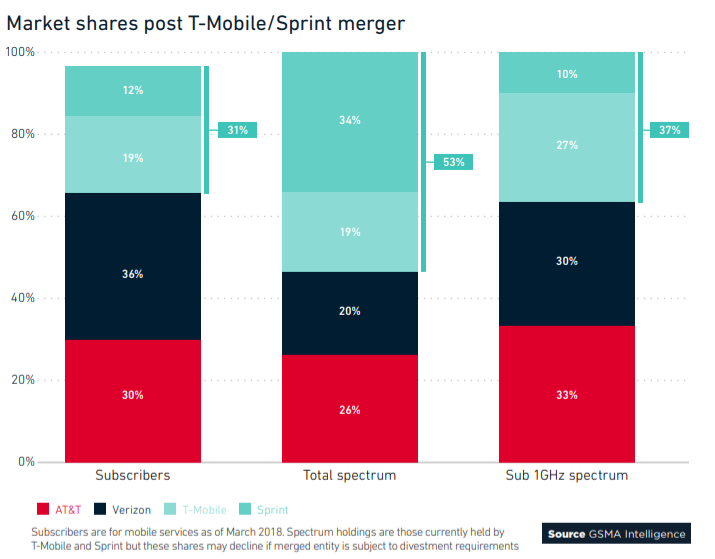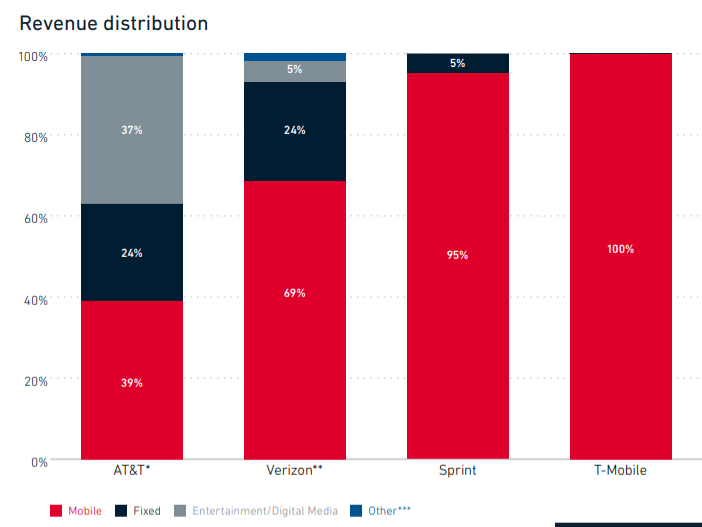Assume a merger between Sprint and T-Mobile US is approved by U.S. regulators, and the tier-one mobile service provider business becomes a contest of three relatively equally-situated contestants, in terms of market share. Is the market stable, long term?


I would argue it remains unstable, even with new T-Mobile US at 31 percent share, AT&T at 30 percent share and Verizon at 36 percent (share of accounts). The rationale is partly strategic and partly historical.
The immediate rationale for the merger is that a bigger T-Mobile US will be better able to compete with Verizon and AT&T, and the rearranged market would arguably feature three firms with roughly similar mobility market shares. But that virtually certainly creates a new market that is as unstable as the four-provider market that is replaced.
The strategic rationale for an unstable market is that, if one assumes the “service provider of the future” owns both fixed and mobile assets, then new T-Mobile US is still half way through a repositioning exercise.
The larger T-Mobile US would remain “mobile only in an industry that is moving rapidly towards “integrated” operations involving ownership of both fixed and mobility assets. And that suggests yet one more big transaction where T-Mobile US and some other entity merge again, to create an integrated competitor. But the size of new T-Mobile US narrows the list of potential acquirers.
On the other hand, to the extent 5G makes a mobile platform a more-perfect substitute for fixed networks, and if the backhaul issues can be finessed, then it is even more likely that a non-traditional buyer of T-Mobile US assets could emerge, as there would be no need for such a non-traditional buyer to worry about ownership of the fixed network.
In general, such potential acquirers might be tier-one platform, device or app providers.
There also is an historical argument for further instability. Established (oligopoly) markets tend to feature a structure with disparate and unequal market shares that encourage suppliers not to launch disruptive attacks.
A ratio of 2:1 in market share between any two competitors seems to be the equilibrium point at which it is neither practical nor advantageous for either competitor to increase or decrease share.
A market with three roughly equally-situated contestants means there always will be a temptation to launch disruptive attacks, especially if one of the three has such a strategy already.
Some studies suggest a stable market of three firms features a market share pattern of approximately 4:2:1, where each contestant has double the market share of the following contestant.
The hypothetical stable market structure is one where market shares are unequal enough, and the leader financially strong enough, to whether any disruptive attack by the number two or number three providers.
In a classic oligopolistic market, one might expect to see an “ideal” (normative) structure something like:
Oligopoly Market Share of Sales
| |
Number one
|
41%
|
Number two
|
31%
|
Number three
|
16%
|
As a theoretical rule, one might argue, an oligopolistic market with three leading providers will tend to be stable when market shares follow a general pattern of 40 percent, 30 percent, 20 percent market shares held by three contestants.
Under most circumstances, firms that have a higher share of the markets they serve are considerably more profitable than their smaller-share rivals, according to the Marketing Science Institute and Profit Impact of Market Strategies (PIMS) database.
And it is that disparity in profitability that allows the leader to weather pricing attacks, while making disruptive attacks often perilous.
To be sure, most financial observers believe new T-Mobile US will have reduced incentives to launch more disruptive attacks, allowing general price levels and profit margins to rise across the whole tier-one part of the industry.
Still, there is little historical precedent for stability in a three-competitor market that is roughly equally balanced in terms of market share. And mobility is but one element of competition.

No comments:
Post a Comment